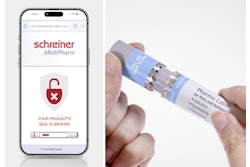
The U.S. Food and Drug Administration on Aug. 5 issued draft updated recommendations to help manufacturers determine when they are required to notify the FDA about modifications made to certain medical devices already on the market, including a separate guidance applicable to software devices.
“These draft recommendations are intended to help manufacturers determine when a change is significant enough to warrant FDA review, including major changes or modifications to the intended use that could significantly impact safety and effectiveness,” says Jeffrey Shuren, M.D., Director of the FDA’s Center for Devices and Radiological Health. “Medical device technology evolves quickly, and not all changes made to marketed devices alter their safety profile or require our review.”
When finalized, the two guidances will provide improved clarity, regarding minor changes that do not require FDA review, and help ensure that the FDA receives appropriate submissions for modifications that do require premarket review by the agency.
The draft guidance documents apply to medical devices the FDA clears through premarket notification; manufacturers submit a “510(k)” document that demonstrates the device is substantially equivalent to another marketed device not subject to premarket approval (PMA). Federal law requires manufacturers to submit a new 510(k) when changes or modifications made to an existing device could significantly affect its safety or effectiveness or the manufacturer makes a major change or modification in the intended use of the device.
The draft recommendations describe how manufacturers should consider the risk presented by the device modifications when determining if they should submit a new 510(k). When finalized, they will replace an earlier guidance issued in 1997.
The FDA first drafted an update to the 1997 guidance five years ago, but the agency withdrew that draft guidance after passage of a 2012 federal law, which required the agency to revisit its policy on 510(k) device modifications. The FDA complied with these requirements, in part by holding a full-day public meeting on this topic in 2013 and publishing a Report to Congress on 510(k) device modifications in 2014.
“The FDA’s approach was informed by the invaluable feedback from key stakeholders, including industry and patient advocates,” Shuren says. “They helped to shape our recommendations to ensure we strike the right balance between safety and effectiveness of modified devices and advancing device innovation.”
The draft guidances maintain the structure outlined in the 1997 guidance, but with specific revisions to address key issues raised during interactions with and submissions to the FDA following the release of the 2011 draft. These discussions highlighted that certain vague terms in the 1997 guidance should be clarified, as some decision-making points have raised questions among manufacturers about whether or not they are required to submit a new 510(k). This clarification is intended to help ensure that devices with significant modifications are not being sold or distributed without FDA review.
Updates in the draft guidance recommendations include:
• Guiding principles, including recommendations for manufacturers to conduct a risk-based assessment in order to determine whether a modification could significantly affect the safety or effectiveness of the device.
• Updated sections and flow charts to provide more clarity to manufacturers on when they likely are required to submit a new 510(k) for labeling, materials, technology, engineering and performance changes.
• Examples of specific device changes that likely require a new 510(k) and ones that likely do not in order to help guide manufacturers during their own decision-making on whether to submit a new premarket notification.
The FDA drafted a separate guidance to address changes that are specific to software. This software draft guidance complements the general 510(k) modifications draft guidance.






















